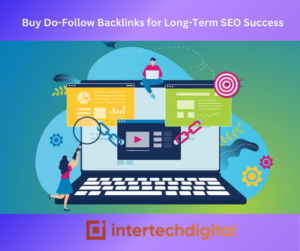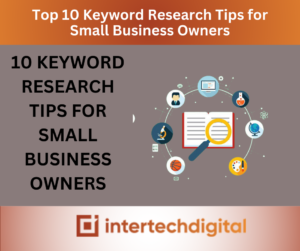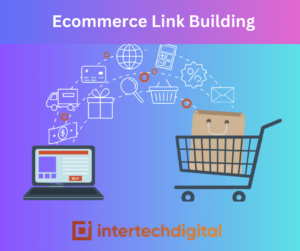
Maintaining an online company necessitates wearing several hats at once, ranging from inventory and marketing to shipments and customer support. On the other hand, business owners should take advantage of the systems that other networks have already implemented to make everyday tasks easier. Amazon is one of the best places for small and medium-sized enterprises to use.
Amazon had millions of active users in 2019, including 105 million Amazon Prime members, many of whom shopped on the web regularly.
According to a 2016 survey, more than half of online shoppers search for a product they want to purchase on Amazon first.
Starting an e-commerce company with Amazon gives you a forum for marketing, engaging with clients, selling, billing, and even shipping your goods. This will help you start your business with less money, develop it faster, and learn valuable lessons about selling online along the way.
On Amazon, millions of third-party vendors collectively sell more than half of the goods sold on the web. Amazon revenues totaled over $90,000 on average for small and midsize companies in the US in 2018. This is made possible by some advantages that any company can gain by using Amazon as their e-commerce site.
It has a built-in customer base: Amazon is visited by millions of people every day who purchase thousands of items. That’s qualified traffic you can’t get on your own, particularly in the early stages of your company. Instead of wasting time and energy trying to draw buyers, you can use the scope to start making money right away.
It’s a brand name: Customers are more likely to trust companies with familiar names. Amazon is a trustworthy website since it has been around for a long time and has been profitable. To win that kind of confidence as a new company, you’d have to put in a lot of effort. When you sell on Amazon’s current site, however, you will benefit from their credibility with consumers right away.
The technical work has already been completed: Setting up an e-commerce website and shopping cart where your prospects can conveniently search and order your goods is one of the most difficult tasks online sellers face. When you deal with Amazon, this has already been done for you, and Amazon will even take care of the upkeep and tech support. This frees up your energy, time, and other resources to concentrate on other things.
Sellers can choose between two tiers on Amazon. Individual sellers pay $0.99 per sale to list goods in more than 20 categories. Professional sellers will list in an additional ten categories, pay a flat monthly fee of $39.99, and customize their listings and shipping. When goods sell, all types of sellers pay extra fees.
Read More: How to Make a Profitable Amazon Storefront
How to Grow Your Business with Amazon Fulfillment
If you sell on Amazon, you can sell your goods directly on the platform, then process and ship orders to customers. If you don’t want to deal with order processing and delivery, which can take up a lot of time and money, you can use Amazon’s Fulfillment by Amazon (FBA) service.
Using FBA is a standardized and relatively straightforward procedure:
- You give Amazon a range of your items.
- Amazon can manage all of the required steps to get the package to your customers when an order is placed.
- As a bill, Amazon takes a percentage of each transaction.
- Each sale’s net profit is deposited into your bank account regularly.
- Amazon handles any refunds or transfers.
Using Amazon Fulfillment has a range of advantages that can help your business grow:
- You save time and money on order processing and delivery.
- Since you don’t need to store items, you can work in a smaller room.
- You keep a higher percentage of your earnings, which you can then reinvest in your business.
- Customers are more likely to buy when they know what to expect in terms of delivery and processing.
Amazon can manage order fulfillment and returns more effectively and at a lower cost-per-order than many small companies since they have streamlined processes and ample staffing. The fees you pay for each FBA sale are usually less than the costs of storing and shipping a similar number of goods yourself.
Tips for Running a Successful Amazon Business
Taking advantage of thousands of people who visit Amazon every minute can drive organic traffic to your listings. For any Amazon quest, however, hundreds, if not thousands, of listings appear. To kickstart your company and boost sales, make sure your listings are easy to find and stand out from the crowd when customers do come across them.
Don’t Forget to Market Yourself.
Continue to attract consumers to your goods using your web marketing. Search engine optimization will help your blog, landing pages, or website rise to the top of online search results. You can also use social media to drive organic traffic to your Amazon goods or pay for ads that direct interested customers there.
Make sure the listing titles and product descriptions are accurate.
Your listing’s title should clearly state what you’re offering, as well as other relevant information. Consider what customers could type into Amazon or Google to find products similar to yours. For example, “iPhone case” is a poor title; “Protective iPhone case suits iPhone 5, shock resistant, multiple colors” would not only provide more detail to consumers, but it will also appear in more search results.
In the listing, you can sell your product.
By writing your listing and product summary with the customer in mind, you will set yourself apart from the competition. Show the advantages of your product and tell the prospect how it will change their life using your marketing, customer psychology, and copywriting skills. Consider including extras such as a product FAQ so that all of the features and advantages are transparent.
Include a variety of large, clear photos.
Customers want to know exactly what they’re buying, so you’ll need to show them. Customers are unlikely to trust photographs of identical items found via an online image search, so don’t use them. Rather, invest in professional product photography, just as you would if they were for your website. If you want to take your pictures, invest in a good camera, good lighting, and a lightbox to make unique images.
Encourage positive feedback.
Amazon customers enjoy reading reviews because it allows them to compare products and determine which ones to trust. Customers are more likely to buy the goods if they can see how others have reacted to them. Customers would be more likely to write reviews if you have a message in the kit asking them to do so or send a reminder to your email marketing list asking them to do so. Never post or solicit fake reviews—not only would you lose your customers’ confidence, but you’ll also be breaking amazon’s terms of service, which may result in your goods or company being banned from the web.
Select the Appropriate Category and Subcategories
When people look or browse for similar items, having the products identified in the appropriate categories is important. If you’re selling organic soap, for example, you don’t want to be near commercial cleaning supplies. To ensure that you are being identified by the right customers, double-check all categories and subcategories for each product you list.
Rising the Size of Your E-Commerce Business
After establishing your business on Amazon, you can apply what you’ve learned to create your e-commerce site and business model. Alternatively, you can continue to use third-party platforms to streamline and simplify your business model, as many sellers do. You may be able to sell your goods and get in front of consumers using sites like eBay or Etsy, depending on your type of company.
Although there are many ways to start an online company, leveraging Amazon’s massive scope and influence to help you launch your own is a fantastic way to get started.
Our Service :



